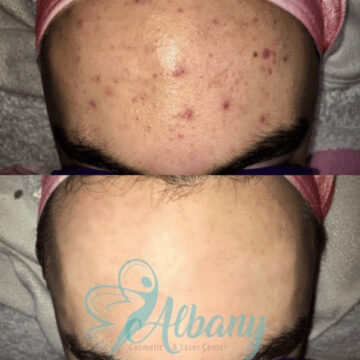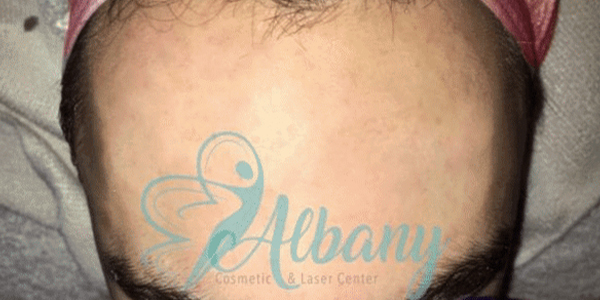Results of Acne Treatment with 532 nm nanosecond laser
The patient was treated with a Spectra Q-switched nano-second laser 532 nm, which uses a specialized wavelength of light to target and destroy the bacteria responsible for acne. The treatment was performed in 4 sessions, 2 weeks apart. Each session lasted for approximately 30 minutes, during which the laser was applied to the affected areas of the patient’s forehead.
Results
The patient responded very well to the treatment, significantly improving her acne. After the first session, the patient noticed a reduction in the number of pimples on her forehead, and her skin appeared less inflamed. By the end of the fourth session, the patient’s skin was clear, and she had no visible acne lesions.
The patient also reported that the treatment was well-tolerated, with only mild discomfort during the procedure. There were no adverse effects, such as scarring or hyperpigmentation, and the patient was very satisfied with the results.
Follow-up
The patient was advised to follow a regular skincare routine to maintain the treatment results. This included using a gentle cleanser, a non-comedogenic moisturizer, and a sunscreen with an SPF of at least 30. The patient was also advised to avoid using harsh or irritating skincare products that could exacerbate her acne.
Conclusion
The Spectra Q-switched nano-second laser 532 nm is an effective treatment option for inflammatory acne. This case demonstrates that a series of 4 laser treatments performed 2 weeks apart can significantly improve acne lesions with minimal discomfort and no adverse effects. However, it is important to note that individual results may vary, and a personalized treatment plan should be developed in consultation with a qualified healthcare provider.
Hydrafacial for Acne Treatment
Skin PIGMENTATION AND LASER TREATMENT
The Use Of Spectra Laser Nanosecond Q-switched
The Usage And Advantages Of Lutronic Spectra Q-switched Laser


